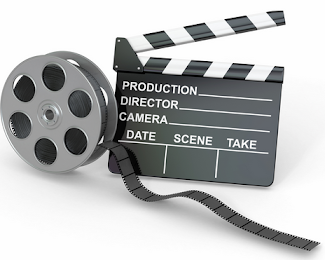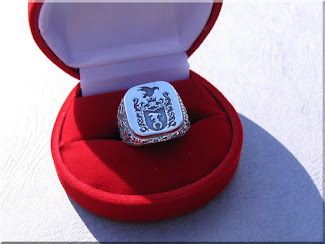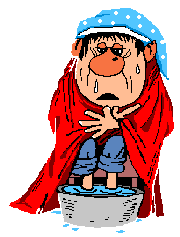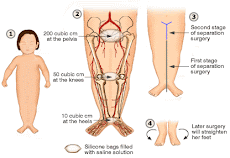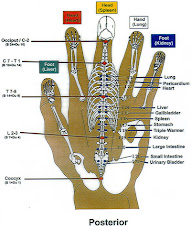Water is clearly the most important nutrient and the most abundant substance in the human body. Water comprises about three quarters of the human mass and is a major component in every cell. In addition water is important to human health for many reasons including but not limited to the following:
Water is the containing medium for electrolytes and all other ions throughout the human body.
Some of these ions help to form electrical pathways for nerve functions.
Being 2% dehydrated can seriously degrade physical and mental functions.
Being 15% dehydrated is likely to be lethal.

Unlike vitamin deficiencies which can take weeks to make someone ill, a water deficiency can kill in days or even hours. Water is also very important for removing toxins from the human body. The body has four major ways of removing toxins which are:
Bowels
Urination
Perspiration
Processing of toxins by the liver
The first three of these four methods directly excrete water from the body. When dehydrated, the body will try to save water by minimizing the use of the first three functions and will force the liver to assume as much of the workload as possible. This extra work will place a heavy burden on the liver which still has other functions in addition to detoxification. Even then, the liver by itself will not be able to do all that work very efficiently and toxins will build up rapidly.
Water is also important to fitness and fat loss for several reasons including the following:
Water fills us up without adding any calories.
Dehydration will degrade a person’s ability to exercise and burn calories.
Dehydration will reduce protein synthesis which is needed to build or repair muscles.
 It is normally recommended to drink about 2 to 3 quarts of water per day. However, this will vary with the size and activity level of the person as well as with the climate conditions. Either case, if your urine is bright yellow, then you need to drink more water. Also, anyone who exercises nonstop for more than 1 hour should consider replacing electrolytes along with the water. This is to avoid hyponatremia (depleted sodium) or other forms of severe electrolyte depletion which can be dangerous.
It is normally recommended to drink about 2 to 3 quarts of water per day. However, this will vary with the size and activity level of the person as well as with the climate conditions. Either case, if your urine is bright yellow, then you need to drink more water. Also, anyone who exercises nonstop for more than 1 hour should consider replacing electrolytes along with the water. This is to avoid hyponatremia (depleted sodium) or other forms of severe electrolyte depletion which can be dangerous.
Now, what to drink when you're thirsty...?
Water or Coke.??
Water
Almost 2% of the western people are chronically dehydrated. (Likely applies to half the world population)
1/3 of mankind starts to eat when the thirst mechanism calls to drink, but it is so weak that it is mistaken for hunger.
Even MILD dehydration will slow down one's metabolism with a few %.
One glass of water will shut down hunger pangs for almost 100% of the dieters studied in a University of Washington study.
Lack of water, the #1 trigger of daytime fatigue.
Preliminary research indicates that 8-10 glasses of water a day could significantly ease back-and joint pain for up to 80% of sufferers.
A mere 2% drop in body water can trigger fuzzy short-term memory, trouble with basic math, and difficulty focusing on the computer screen or on a printed page.
Drinking 5 glasses of water daily decreases the risk of colon cancer by half, plus it can slash the risk of breast cancer by 80%., and one is 50% less likely to develop bladder cancer. Do you drink the amount of water you should drink every day?
It helps you to lose weight to drink a glass of water each time you feel the urge to get something from your fridge...!!
Instead of having 10 cups of coffee/tea/milk or softdrinks every day
(often milk and sugar included), take a glass of water first.
Instead of eating a piece a cheese/sausage/popcorn/chips and stuff like that, drink a glass of water first.
It helps you to lose weight to drink a glass of water each time you feel the urge to get something from your fridge...!!
Instead of having 10 cups of coffee/tea/milk or softdrinks every day
(often milk and sugar included), take a glass of water first.
Instead of eating a piece a cheese/sausage/popcorn/chips and stuff like that, drink a glass of water first.
Or you can drink:
COKE
COKE
You can put a T-bone steak in a bowl of Coke and it will be gone in two days.
To clean a toilet: Pour a can of Coca-Cola into the toilet bowl and let the 'real thing' sit for one hour, then flush clean. The citric acid in Coke removes stains from vitreous china.
To remove rust spots from chrome car bumpers: Rub the bumper with a rumpled-up piece of Reynolds Wrap aluminum foil dipped in Coca-Cola.
To clean corrosion from car battery terminals: Pour a can of Coca-Cola over the terminals to bubble away the corrosion.
To loosen a rusted bolt: Apply a cloth soaked in Coca-Cola to the rusted bolt for several minutes..
To remove grease from clothes: Empty a can of Coke into the load of greasy clothes, add detergent, and run through a regular cycle. The Coca-Cola will help loosen grease stains. It will also clean road haze from your windshield.
FOR YOUR INFORMATION:
The active ingredient in Coke is phosphoric acid. It will dissolve a finger nail in about four days. Phosphoric acid also leaches calcium from bones and is a major contributor to the rising increase of osteoporosis.
The distributors of Coke have been using it to clean engines of the trucks for about 20 years!
Now the question is, would you like a glass of water? ...
http://bert-firebert.blogspot.com/2010/07/drinking-sodas-bad-ideado-fruits-and.html
Hot water.
Let's drink hot water instead of cold after every meal...
there are a lot of benefits, one is described below.
Please note that
IF HOT WATER ALONE DOES NOT APPEAL TO YOU, DRINK HOT CHINESE TEA OR HERBAL TEA AS SUBSTITUTE FOR HOT WATER. FEW LEAVES OF FRESH MINT IN HOT WATER IS WONDERFUL TOO..
Heart Attacks And Drinking Warm Water

The Chinese and Japanese drink hot tea with their meals, not cold water, maybe it is time we adopt their drinking habit while eating, cos this habit seems to be of major importance in preventing heart attacks..!!!
For those who like to drink cold water, this article is applicable to you. It is nice to have a cup of cold drink after a meal. However, the cold water will solidify the oily stuff that you have just consumed. It will slow down the digestion. Once this 'sludge' reacts with the acid, it will break down and be absorbed by the intestine faster than the solid food. It will line the intestine. Very soon, this will turn into fats and lead to cancers, first to hit your heart..... It is best to drink hot soup or warm water/tea after a meal.
For those who like to drink cold water, this article is applicable to you. It is nice to have a cup of cold drink after a meal. However, the cold water will solidify the oily stuff that you have just consumed. It will slow down the digestion. Once this 'sludge' reacts with the acid, it will break down and be absorbed by the intestine faster than the solid food. It will line the intestine. Very soon, this will turn into fats and lead to cancers, first to hit your heart..... It is best to drink hot soup or warm water/tea after a meal.

Common Symptoms of Heart Attack...
You should know that not every heart attack symptom is going to be
the left arm hurting. Be aware of intense pain in the jaw line.
You may never have the first chest pain during the course of a heart attack. Nausea and intense sweating are also common symptoms. 60% of people who have a heart attack while they are asleep do not wake up. Pain in the jaw can wake you from a sound sleep. Let's be careful and be aware.
The more we know, the better chance we could survive.
FRUITS,
(should be eaten on empty stomach.)
http://bert-firebert.blogspot.com/2010/01/whats-your-problem.html
(should be eaten on empty stomach.)
http://bert-firebert.blogspot.com/2010/01/whats-your-problem.html
list of desseases and a natural cure.
Previous post,
.












